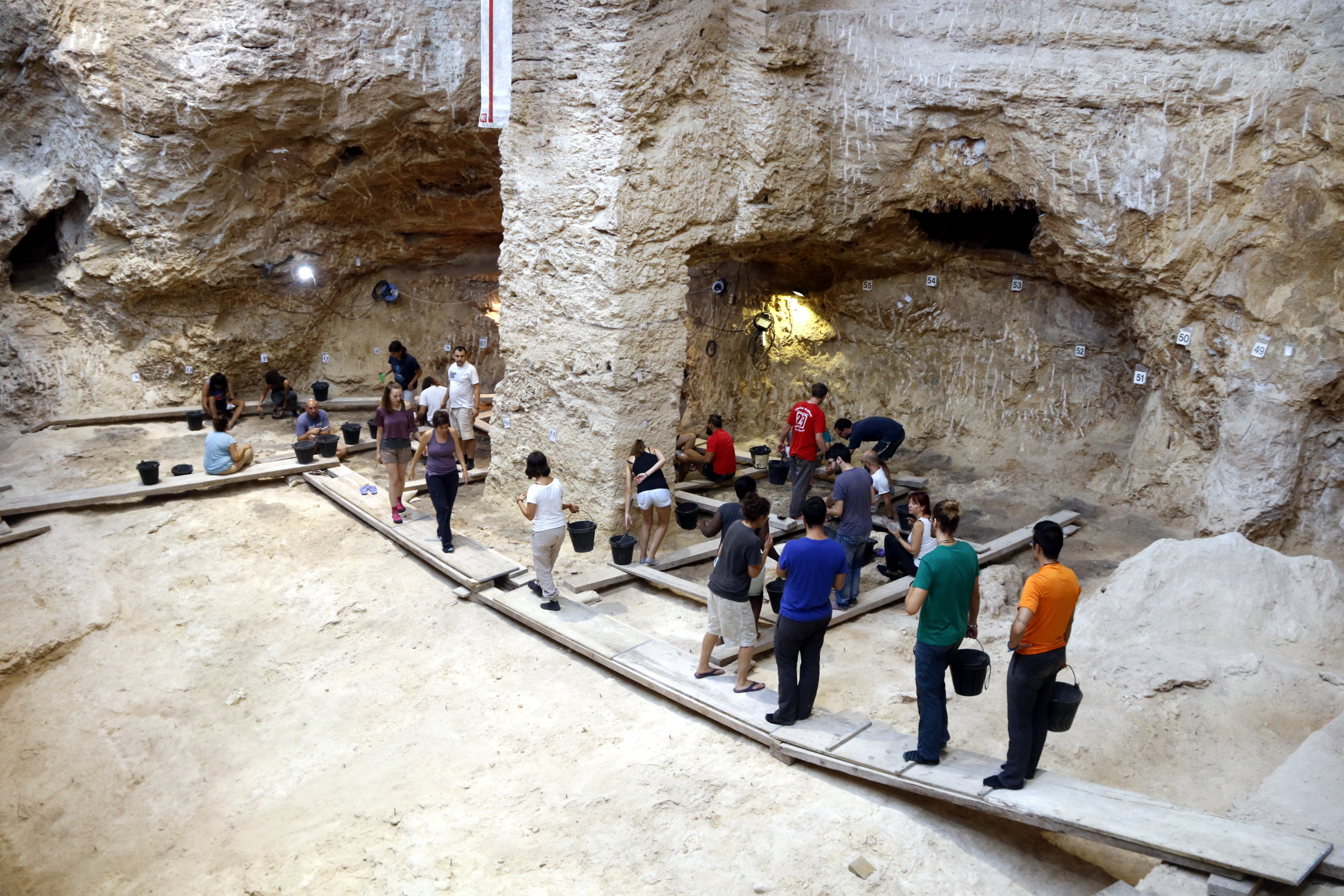53 archaeologists to document Neanderthal life from 60,000 years ago
University researchers from all over the world excavate together in the Abric Romaní in Catalonia in this 35th campaign

What was the Neanderthals’ life like 60,000 years ago? That is what fifty-three archaeologists from different universities around the world want to document by excavating in the Abric Romaní in Capellades 60 km west of Barcelona. The archaeological site has been excavated since 1983 and this year’s aim is to finish excavating level Q, which is 58,000-60,000 years old. In this way, it is possible to learn more about the Neanderthals’ settlement and their habits. So far the archaeologists have already found around 50 fireplaces at this level, and they foresee finding approximately 20 more during this campaign.
The Abric Romaní is a cave in the Capelló escarpment in the province of Barcelona. The Neanderthals used the Abric as a central camp. According to Eudald Carbonell, the archaeologist who leads the excavation from the Catalan Institute of Human Paleoecology and Social Evolution (IPHES), level Q is rich in fossils. During the last two excavation campaigns, the archaeologists have found more than 10,000 remains of tools made of stone, mainly flint, and also fauna remains from what the Neanderthals hunted such as horses, deer and goats.
Only site in the world with more than 500 fireplaces excavated
The head of the project explained that as of today they already have some clear patterns about how the Neanderthals in this region organized themselves. According to Carbonell, “they formed groups of 12 to 25 individuals” and there were different types of settlements “based on the season of the year.” Carbonell further explained that this is the only site in the world where more than 500 fireplaces have been excavated and this allows the archaeologists “to have a very clear idea of what they ate, but also of how they lived.”
For the following excavation campaigns, after level Q has been completed, the idea is to do a lateral exploration to observe what there is at the next levels to “see if the Neanderthals’ activity changed”. As a matter of fact, Carbonell explained that they already know that the Neanderthals occupied the Abric Romaní for at least 115,000 or 120,000 years.
In the more than 30 years of excavation activity at the site, the archaeologists have never found any Neanderthal remains. One of the reasons for this is that the Neanderthals did not bury their dead in this kind of camp. But the researchers have not lost faith and they think that they still might find some at levels that have not yet been excavated. To Carbonell, finding hominid remains would be “the icing on the cake” and he says that “if there is a site that deserves to find a Neanderthal, it is this one, because of the years we have spent, our patience and perseverance.
The future Neanderthal Museum together with Ferran Adrià
One of the remaining challenges of Carbonell's research team is to create a Neanderthal museum. As a matter of fact, they already took the first step for such a museum seven years ago, but due to the economic crisis the project was halted and set aside. With time the idea has evolved, and Carbonell wants the museum to focus on Neanderthal food.
Carbonell has been working on the project together with the Catalan top chef Ferran Adrià and the archaeologist believes that “explaining the Neanderthals’ gastronomy, cuisine and life habits can help us understand how humans live today”. The idea is that it should be a different and multidisciplinary museum, in order to be able to explain the climate, the tools, the fireplace distribution and how the first classic Europeans lived.